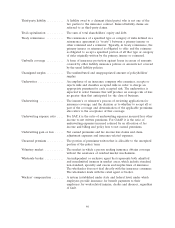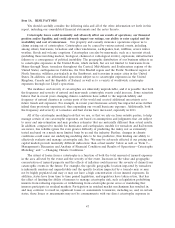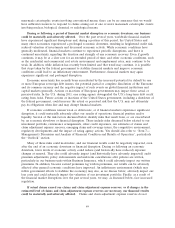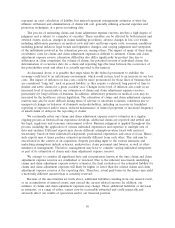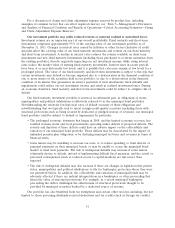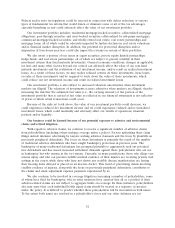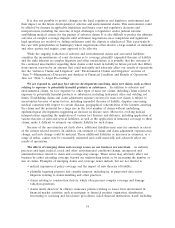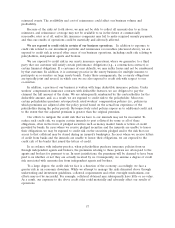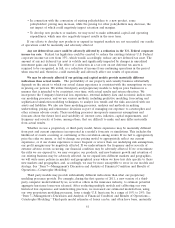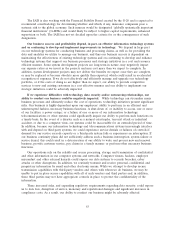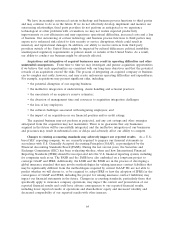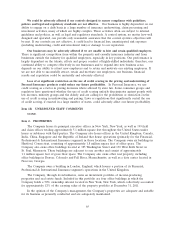Travelers 2011 Annual Report Download - page 67
Download and view the complete annual report
Please find page 67 of the 2011 Travelers annual report below. You can navigate through the pages in the report by either clicking on the pages listed below, or by using the keyword search tool below to find specific information within the annual report.those related to investment management businesses; possible accounting irregularities; and
corporate governance issues;
• the assertion of ‘‘public nuisance’’ or similar theories of liability, pursuant to which plaintiffs
seek to recover monies spent to administer public health care programs, abate hazards to public
health and safety and/or recover damages purportedly attributable to a ‘‘public nuisance’’;
• claims relating to molestation by an employee of an insured;
• medical developments that link health issues to particular causes, resulting in liability claims;
• claims relating to unanticipated consequences of current or new technologies; and
• claims relating to potentially changing climate conditions, including higher frequency and severity
of weather-related events.
In some instances, these emerging issues may not become apparent for some time after we have
issued the affected insurance policies. As a result, the full extent of liability under our insurance
policies may not be known for many years after the policies are issued.
In addition, the potential passage of new legislation designed to expand the right to sue, to remove
limitations on recovery, to deem by statute the existence of a covered occurrence, to extend the statutes
of limitations or otherwise to repeal or weaken tort reforms could have an adverse impact on our
business.
The effects of these and other unforeseen emerging claim and coverage issues are extremely hard
to predict and could harm our business and materially and adversely affect our results of operations.
The intense competition that we face could harm our ability to maintain or increase our business
volumes and our profitability. The property and casualty insurance industry is highly competitive, and
we believe that it will remain highly competitive for the foreseeable future. We compete with both
domestic and foreign insurers which may offer products at prices and on terms that are not consistent
with our economic standards in an effort to maintain or increase their business. The competitive
environment in which we operate could also be impacted by current general economic conditions,
which could reduce the volume of business available to us as well as to our competitors. In addition,
the competitive environment could be impacted by changes in customer preferences, including customer
demand for direct distribution channels. See ‘‘Item 7—Management’s Discussion and Analysis of
Financial Condition and Results of Operation—Outlook.’’
A substantial majority of the Company’s Personal Insurance business is written after an agent
compares quotes using comparative raters, a cost-efficient means of obtaining quotes from multiple
companies. The usage of comparative raters tends to increase the focus on price over other competitive
criteria. Over time, this increased focus on price may provide a relative advantage to carriers that have
more efficient cost structures and that are better able to accurately estimate, and price for, claims and
claim adjustment expenses. If we are not able to operate with a competitive cost structure or accurately
estimate and price for claims and claim adjustment expenses, our underwriting margins could be
adversely affected over time. Additionally, there is potential for similar technology to be used to access
comparative rates for small commercial business. Agents and brokers may also create alternate
distribution channels for commercial business, such as insurance exchanges, that may adversely impact
product differentiation and pricing.
Our competitive position is based on many factors including but not limited to our:
• ability to retain existing customers, to obtain new business and to profitably price our business;
• agent, broker and client relationships;
• speed of claims payment;
55



